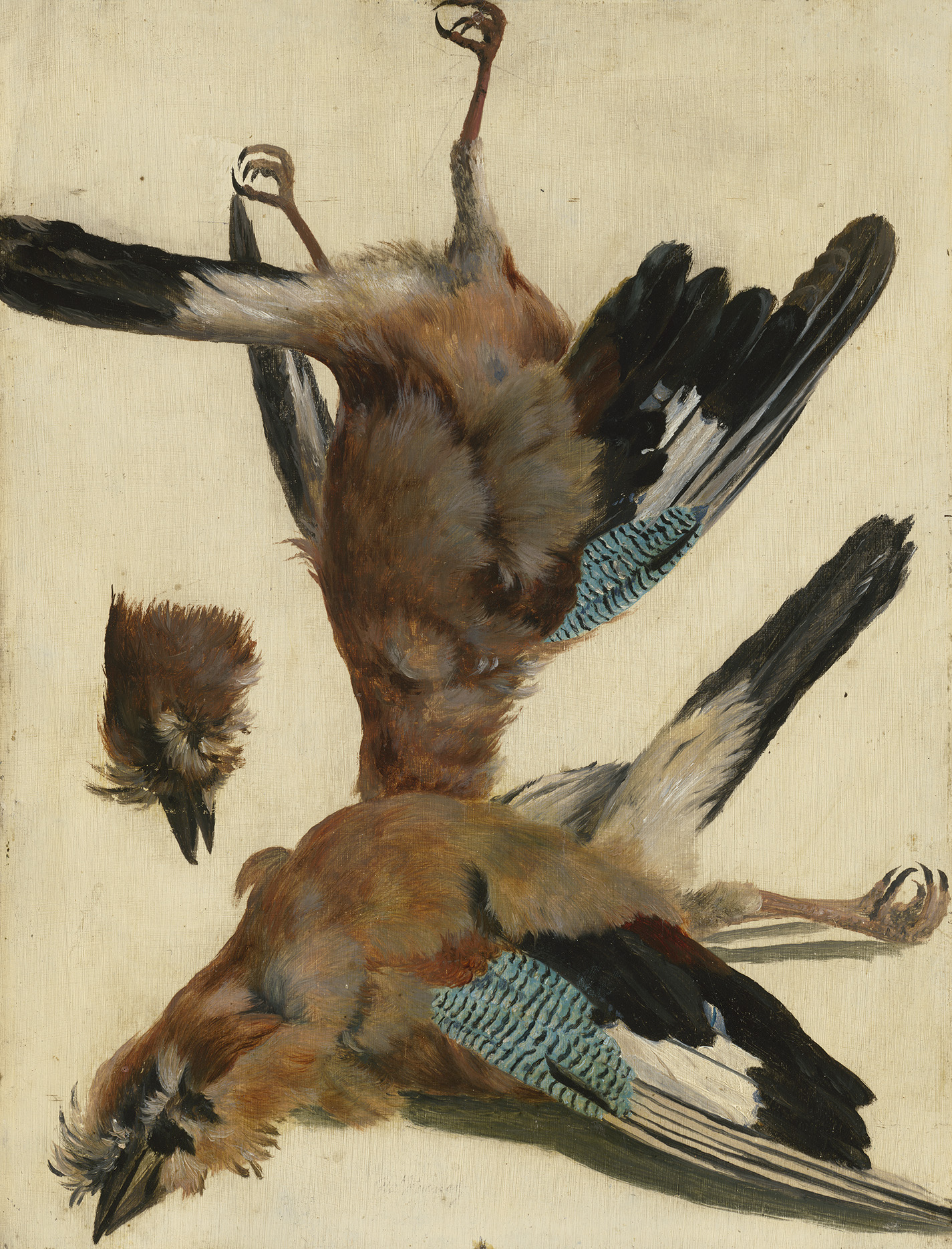Loading the page ...
Horace Vernet
(1789–1863, Paris)
Still Life with Two Dead Jays. Oil on cardboard. 28.5 x 36 cm.
Horace Vernet came from a prominent family of artists – his father was the painter, Carle Vernet, and his grandfather the famous landscape and marine painter, Joseph Vernet – and he soon demonstrated his precocious talent. Vernet was taught by his father and then apprenticed to Jean Michel Moreau and François André Vincent. As a young man he was an ardent Bonapartist and took part in 1814 in the defence of Paris under Marshal Moncey, an event he commemorated in his famous picture of 1820 La Barrière de Clichy (Musée du Louvre, Paris). The same year Horace went on his first journey to Italy with his father. In 1826 he was appointed a teacher of history painting at the Académie des Beaux-Arts in Paris; from 1829 to 1835 he served as director of the Académie de France in Rome, where
he was succeeded by Ingres in 1835.
Vernet produced an extensive corpus of paintings. He became famous primarily for his monumental military and battle scenes, although he also produced portraits and oriental genre scenes as well as small cabinet paintings and lithographs. A busy and famous artist, he travelled extensively throughout Europe and the Orient. The culmination of his artistic career was his admission to the Légion d’Honneur in 1842.
The study of two dead jays, dashed off in masterly fashion and with great accuracy, testifies to Vernet’s artistic talent. It probably arose as an artistic finger exercise. The palette, which is reduced to just a few earthy colours, is invigorated by the light blue of the outer vane of the wings, while the grey-beige background effectively emphasises the intensity of the colouration. This modest, reverent study shows Vernet to be the child of a centuries-old European tradition of still life painting which goes back to Jacopo de Barbari’s famous Still Life with Partridge and Iron Gloves from 1504 (Alte Pinakothek, Munich).
Contact us for further information